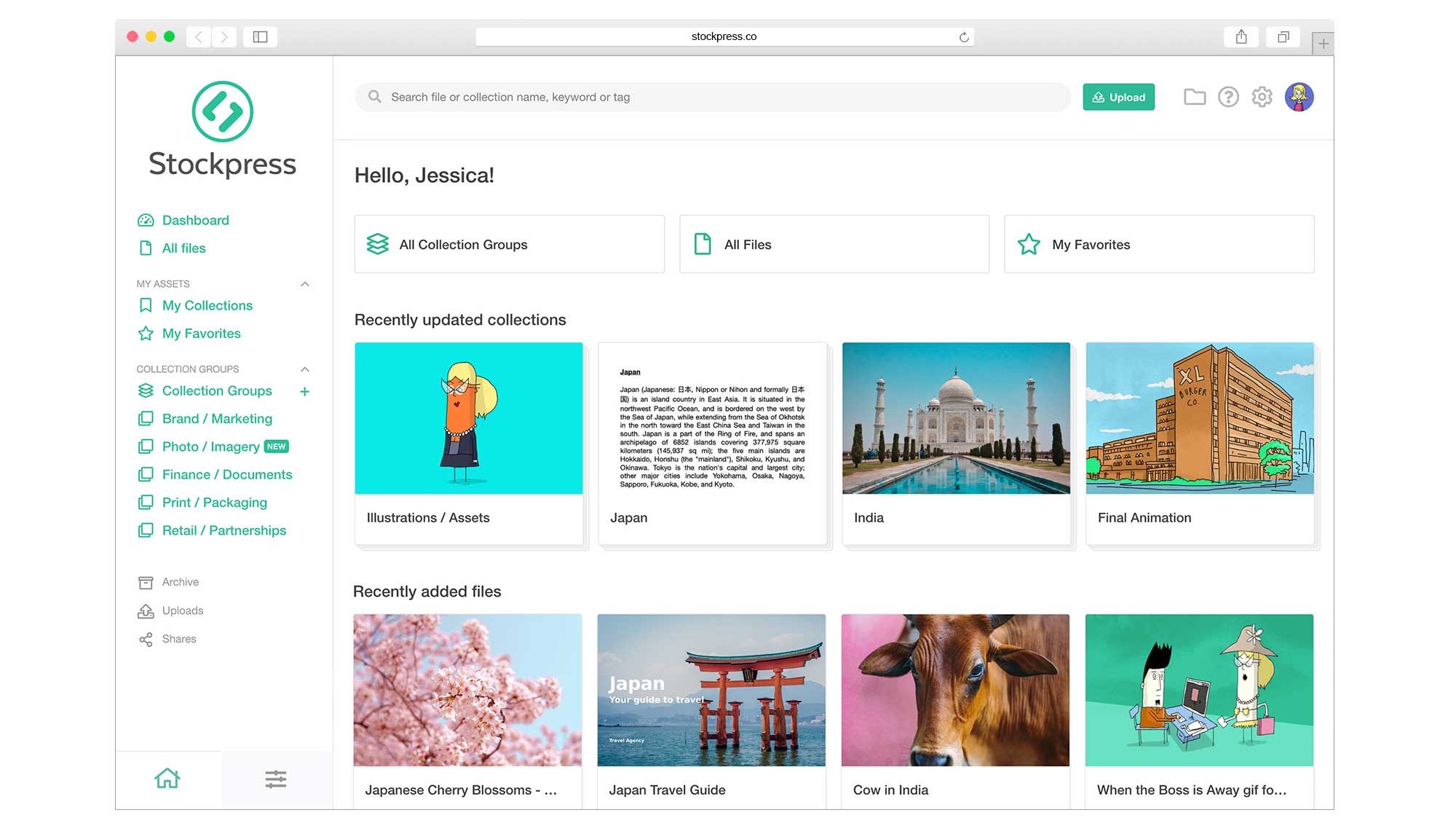Endless Zoom calls aren’t the only thing we’ve had to get used to since 2020. In today’s post-Covid workspace, the transition to hybrid and remote work teams has exposed some of the deep challenges connected with existing file sharing and management platforms. Businesses that lack an easy-to-use file management or DAM (digital asset management) system can suffer severely as a result of file sharing problems brought on by distributed workers and teams in multiple locations.
As a result, many digital businesses, such as those in media, advertising, and other creative teams, have already shifted their digital work to file management or digital asset management platforms. The Global File Sharing Software Market is expected to grow at a 26% CAGR from 2020 to 2026. Remote employees – and there is good reason to think we will now remain in a hybrid model forever – require a streamlined method of collaborating at any time and from any location.
Even before the pandemic, file sharing problems were rife, and file management was a constant headache. What should have been a simple process was often disorganized, confusing, and time-consuming. However, being able to successfully mitigate file sharing issues is now a business-critical challenge. Businesses are rightly scrambling to optimize their procedures to make file management and sharing amongst their staff as painless as possible.
Here are six major file sharing nightmares and ways we think they can be overcome. Happy reading!
Cost per seat
Platforms with ‘per user’ license fees can quickly become costly and result in fractured teams. Pricing structures like this can make budgeting for growth difficult. Users deemed ‘less deserving’ of a license are often left without access to an essential business tool. In the case of file sharing and file management, the sole purpose is to make sure that people can get the files they need to do their job. A per-user licensing model can result in businesses failing to bring their internal and external teams together into a single platform leading to inaccessible assets, utilized incorrectly, or even worse – not being used at all.
With per-user licensing fees making it prohibitively expensive for teams to consolidate all stakeholders on a single platform – what’s the solution? Using a cloud file sharing and management platform that allows for unlimited users in a single plan.
This is not only more cost-effective, but it also helps teams become more organized and productive. This is especially true for platforms that allow for the creation of unlimited teams as well as unlimited custom roles.

Limited user access
Platforms with traditional file structures and limited permission management capabilities require you to create new folders and duplicate files every time a new employee leaves or joins the company. Because you cannot build user teams, this process gets repeated over and over again. Traditional file management platforms often do not take into account storage limits. If an external user has run out of storage, they may not be able to receive or access their files easily and repeatedly.
When selecting a cloud file sharing and file management platform, accessibility is key – so that everyone who needs to access their files, can get access to their files, wherever or whenever they need them. Without this, file sharing problems can arise. The best software for storing and sharing files should bring users to the files they need, rather than making them manage various links and platforms.
Wasteful file duplication
Duplicating files to add them to a team member’s folder is inconvenient, time-consuming, and can result in confusion about which file is the correct file. This confusion can hamper productivity, work quality, and reduce efficiency. Issues like this may also lead to more storage being used unnecessarily, and result in higher platform costs. This is one of the file sharing problems that cause the biggest headache, but thankfully is one of the easiest problems to fix.
To avoid these issues, businesses should invest in a file sharing platform that eliminates the need for file duplication, and where possible, includes file versioning functionality. Cloud-based file storage and management platforms where one file can exist in multiple places without having to be duplicated are an excellent way to establish consistent version control, reduce storage costs and increase efficiency.
Complex folder structures
Traditional folder structures and unstructured file names can make it difficult for teams to find the files they need and can create endless file sharing problems. Who hasn’t experienced the use of incorrect files, the deletion of valuable files altogether, and, in many cases, the file never being discovered in the first place?
Clicking through folder after folder just to discover that the file you’re looking for isn’t there is frustrating, time-consuming, and often results in people giving up. Finding files should be quick, easy, and painless. However, if you’re using a system that relies on a traditional folder structure, getting to what you need quickly can be difficult, especially if the folder structure is complex.
Managing files in folders can be limiting. Rather than deciding which folders a file should go into, select a cloud file storage and management platform that allows you to store single files in multiple locations and allows users to add tags, keywords, and other metadata to make them easier to find with visual search and filter.
Road-blocked by storage space
File type and size limits can cause issues when sharing files, especially for teams creating or receiving large files. This issue can be exacerbated further when the stakeholders you are sharing files with, are blocked from receiving them because they have run out of storage or they don’t have access to the platform where they are being stored.
Storage constraints often force businesses to use multiple platforms to manage and share their files. This practice means that files can quickly become disorganized, lost in lengthy email threads, in various desktop folders, and worst of all, on hard drives. The last thing your team needs is for file sharing problems and storage space bottlenecks to create operational inefficiency and stifle creativity.
Finding a cloud file sharing and management platform that isn’t reliant on your clients’ or stakeholders’ storage space allows teams to be more effective and productive. If you want your teams to scale without worry, it’s best to use a platform that allows a team to grow without limits.
Confusing file names
Trying to find files based on their name alone is crazy if you think about it. It can be like trying to travel back in time to remember exactly what you were thinking that day or reading the mind of the person who created the file. Similarly, if only the file name is searchable, and the file name is the original, e.g. coverimage_v3_002.jpg, it can be nearly impossible to find or identify.
Confusing file names are one of the most common reasons for people not being able to find their files. When the only alternative is navigating through folder after folder in the hope of finding what you’re looking for, it’s no wonder that efficiency, creativity and enthusiasm for a task can dwindle.
The simplest method to overcome ‘folder fatigue’ is to utilize a cloud file storage and management platform where you can edit or modify file names and add descriptions and tags to help users search. Choosing a platform that allows you to filter by additional metadata such as file type, file extension, upload date, file owner, and more will boost your chances of quickly discovering the files you need!

Stockpress: A comprehensive cloud file sharing and management solution.
Managing and sharing files is an essential component of every modern organization, especially for those who have embraced a remote working model. Businesses that use the right file sharing and management solution can save time and money while making file organization simple. By increasing operational efficiency and maximizing the ROI on asset creation, they can help their teams to collaborate more effectively.
However, it’s important to note that not all file sharing systems are created equal. Some have pricey per-user licenses, limited access capabilities, unnecessary file duplication, perplexing folder structures, insufficient storage space, and no systematic tagging system! This combination of file sharing problems will inevitably hamper day-to-day workflows and leave your staff frustrated with file management. This should not be the case; instead, businesses like yours should invest in a cloud file sharing and management platform that not only provides a cost-effective solution to an age-old problem, but also offers unlimited users, optimized storage, and optimal file tagging.
If you are experiencing file sharing problems, and think a more flexible and easy-to-use platform than your current solution could help your business, why not try the easiest way to manage and share files with teams? With thousands of users managing and sharing their files with Stockpress, we help businesses keep their teams close and their files closer. With unlimited users and no file limits, our cloud file sharing and management solution is ideal for those who want to organize, manage, collaborate and share their files from anywhere in the world.


